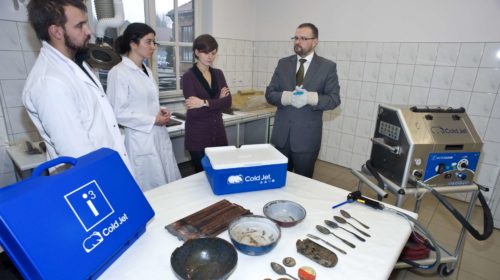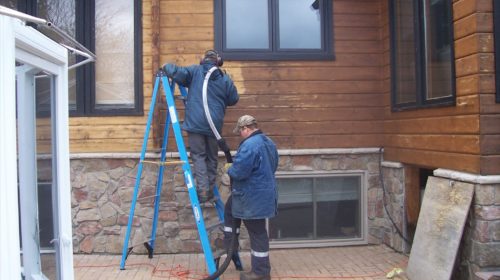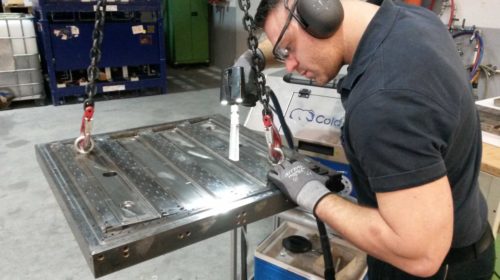
Historic train car safely restored with minimal disturbance to surrounding area
THE SITUATION
The Works Restaurant in Loveland, Ohio, has been serving up family-friendly meals since 2003. Scott and Jamie Gordon are life-long residents of Loveland and owners of The Works. The structure that houses The Works was originally built in 1905 and served as a water filling station for steam locomotives. After diesel locomotives replaced their steam predecessors, the building became a firehouse and later a public works building. It then sat vacant for many years before the Gordons purchased and rehabbed it into the eclectic building it is today.
“We call it The Works because the building has been through the works,” said Scott Gordon.
Recently the Gordons decided to expand their business, but they wanted to keep the historic character that defines their building intact. After a train trip to the Grand Canyon, they knew exactly how they wanted to execute their plan. They decided that purchasing a train car and converting it into additional seating would be the perfect complement to the original function of the building.
THE PROBLEM
After purchasing an 84-foot long historic 1921 Pullman passenger car and having it lowered into place next to their restaurant, they knew they had a big job ahead of them in terms of cleaning it up. The team at Cold Jet, another Loveland-area business and provider of environmental cleaning technologies, heard about the Gordon’s plans and provided the use of their equipment to help restore the old train car.
Normally sand blasting or chemicals would be used to remove the exterior paint. But that could pose a big mess at a place where food would be served throughout the project.
THE SOLUTION
To aid with the surface preparation, Cold Jet loaned the Farrow System® to The Works to aid in the cleaning process. Cold Jet is an authorized distributor for the Farrow System, which uses a wet abrasive to quickly remove coatings from surfaces without damaging them. It combines water with a media made from 100 percent recycled crushed glass. This may be safely used in enclosed and populated environments, and can remove surface coatings quicker than dry abrasives, without creating dust and requiring extensive cleanup.
“The Farrow System works great,” said Gordon. “It’s not too aggressive, but is able to easily remove 90 years of primer, paint and rust. We have stripped the exterior down to bare metal with minimal media and disturbance to the surrounding area.”
THE RESULTS
Gordon is pleased with the results. It has taken less than 25 hours to completely remove the paint from the train’s exterior. In most cases, this job would have taken over 60 hours. Not only did this method take less time, it required very little labor and almost no cleanup.
The Gordons plan to have their expansion completed by Christmas. All that remains is priming and painting the exterior of the car and putting the refurbished interior in place. All the original hardware will be used, with new wood floors and chandeliers installed to give diners a real feel for the car’s original 1920s charm. The train will hold 44 additional seats at 11 tables – perfect for private parties. It should be a big hit with customers who already love the fun atmosphere of The Works Restaurant.

